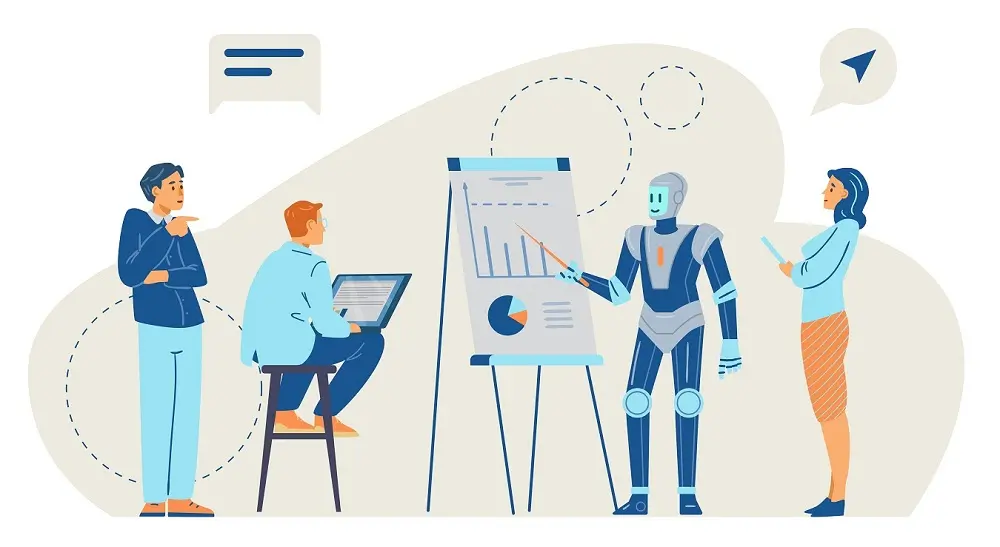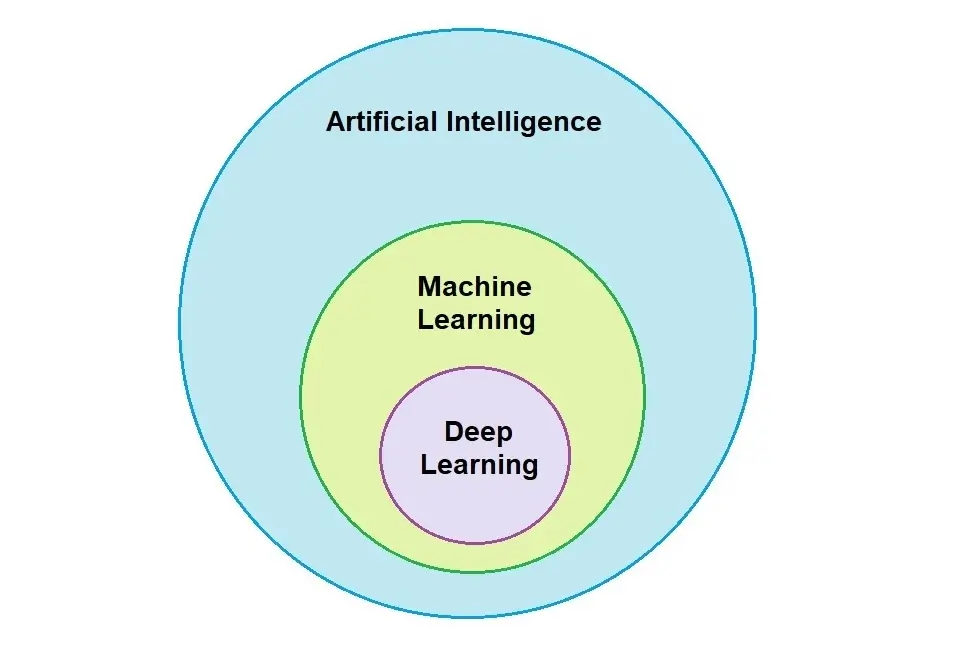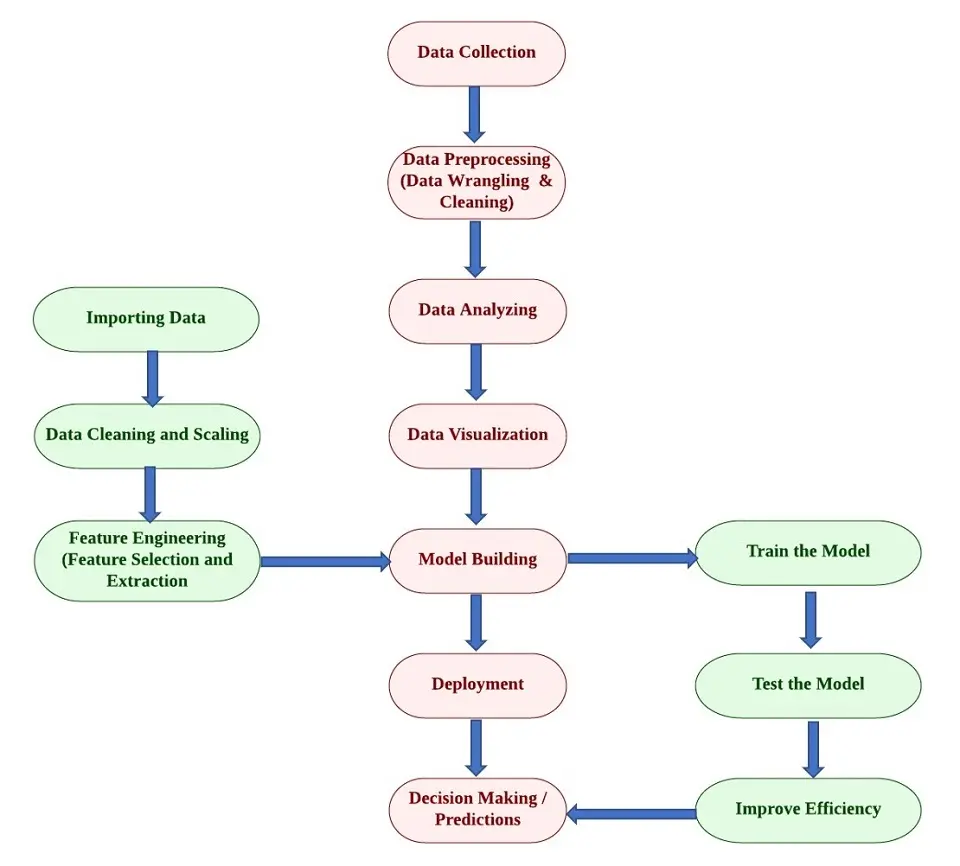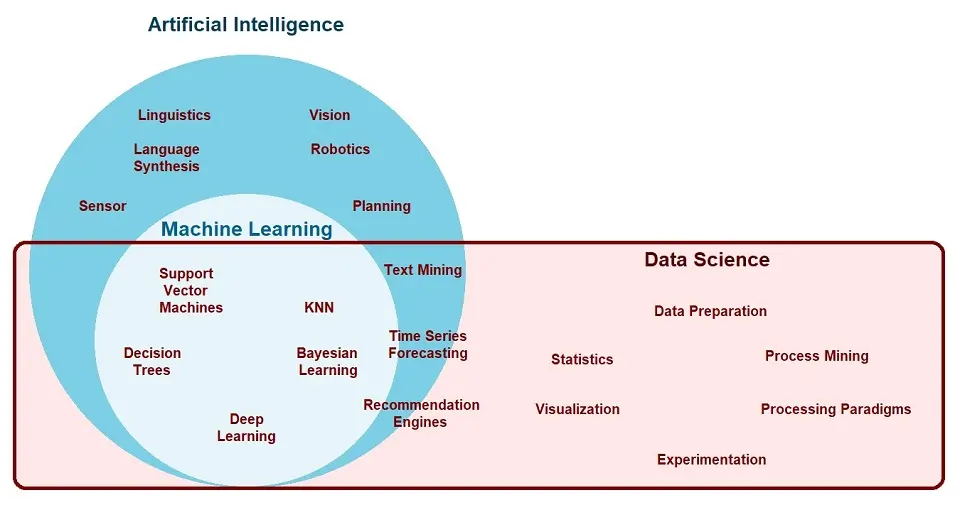Demystifying the Famous Buzzwords: Data Science, Artificial Intelligence and Machine Learning

Artificial Intelligence (AI), Machine Learning (ML), and Data Science are very common keywords that we use worldwide today. Irrespective of the profession pursued, these keywords are common across all the domains.
Newspapers are covered with articles related to data science or AI on a day-to-day basis. Every day, there is news talking about the advancements in these fields. Technology is revolutionizing the world, so everyone tries their best to speed up with the latest developments.
In this article, our focus is to simplify these terms’ meaning and demystify the connection between these terms. Let’s start with one term one after the other. Let’s begin with Artificial Intelligence or AI.
Artificial Intelligence
Artificial and Intelligence are independent words that have their own meanings. The word “Artificial” refers to something created by humans (not occurring naturally). Intelligence is the ability to think, understand, and learn.
Together, Artificial Intelligence is a component of computer science where machines behave like humans and display human-like behavior. For example, Alexa is a good example of an AI system that acts as a voice assistant and performs all tasks specified by human beings.
The goal of the AI system is to mimic the human brain and make intelligent and dynamic decisions that humans make.
If you have been interacting with any chatbot on any banking website or having an online chat with a customer service care executive, you would often interact with Artificial Intelligence software unaware of the real fact.
Today, AI is designed to look as natural as possible, and the artificial component is diminishing with time. As time progresses, the entire feeling of talking with a machine will die out, and you will not be able to distinguish whether you are conversing with a human or AI.
The AI systems are being programmed in a way that they can display their intelligence just as humans do. Here, intelligence refers to planning, solving problems, and providing reasoning. These AI systems work with all kinds of data, like images, audio, text, natural language processing, and videos.
AI systems today are capable of providing various services like:
- Speech Recognition
- Virtual Assistants
- Problem-Solving
- Face Recognition
- Search and Recommendation engines
Artificial Intelligence-enabled systems are ‘smart’ enough to make the right decisions and answer human questions.
Machine Learning
A newborn kid isn’t born with all the skills. The way his or her parents teach him to talk or walk is exactly what the kid tries to follow. The kid learns from the actions shown to him. His brain grasps details from the activity and learns to walk step by step.
A kid initially tries to copy the adult’s actions but eventually learns as the activity is performed repetitively. This is the best example of machine learning in human life.
Machine learning is feeding data into the machine, which learns from the patterns discovered in the data without manual intervention. There is no explicit programming that is performed, and it’s purely based on the observations and the subsequent learnings. The machine learns over time and improves with its predictions subsequently.
A wide array of examples of machine learning are available all around us. For example, we all use Netflix for viewing content. Amazon Prime and Netflix use machine learning algorithms for recommending content to users.
We use Amazon or Rakuten, etc., regularly for online shopping. All these online marketplaces and e-commerce websites use machine learning to recommend products and detect fraudulent transactions. Face recognition is one other popular application that you see around yourself. Today, even mobile phones have such capabilities.
Machine learning algorithms can be of varied types. The first one, titled “Supervised Learning,” is where the labels are provided for the data, and the algorithm has to output the correct label for the new data. On the other hand, “Unsupervised Learning” is where the machine learning algorithms have to uncover the hidden patterns from the dataset.
To know more about these types, please refer to the article “Types of Machine Learning“.
How is Machine Learning related to Artificial Intelligence?
Machine learning is a smaller subset of artificial intelligence as it helps the AI to learn from the data and improve from experience without being explicitly programmed.
Machine learning is limited to the data it has. Artificial Intelligence is a superset of machine learning as it can contain several tasks and perform them like a human being. Machine learning is an example of a narrow AI system that is purpose-driven and focused on specific tasks.
In short, machine learning can help you to develop an AI system. However, AI doesn’t have to be necessarily developed using machine learning. The picture below describes the length and breadth of these terminologies. Machine learning is portrayed as a subset of artificial Intelligence here. Further, deep learning is a subset of machine learning.
Data Science
The field of Data Science is a multidisciplinary field where we discover actionable insights from our large unstructured data. Data Scientists use various techniques like statistics, data analysis, machine learning, and big data techniques to parse through the massive data.
Data Science is an intersection of AI but is not necessarily complete AI. The life cycle of Data Science is a mix-up of various steps related to Data cleaning, preprocessing, exploratory data analysis, and modeling and evaluation. The below flowchart talks about all the different steps involved in detail.
Data Science has various applications across all domains like consumer goods, finance, technology, media and entertainment, process and manufacturing, healthcare, retail, banking, etc.
Let’s discuss how the three topics – AI, ML, and Data Science are related. The figure below visualizes the relationship between Data Science, AI, and ML.
Looking at the above figure, we learn that AI and ML are not subsets of Data Science. In fact, Data Science is also not a subset of the other two. There is a lot more to Data Science than just AI and ML. Similarly, there is much more to Artificial Intelligence than ML and DS.
If you observe the above, text mining is at the intersection of AI and Data Science. Text-based analytics problems make use of natural language processing to transform raw unstructured data to a structured format, which Machine Learning algorithms could further use.
The Importance of the Differences
There are a wide variety of job roles available in the data science domain today. One needs to know the differences in terminology to be clear about the job roles eventually.


M.Tech. in Data Science, Ekta enjoys working with new programming languages like Python, R programming, SAS, etc. In addition, she is adept at Machine Learning, Artificial Intelligence, and Big Data technologies and has exposure to NLP.
She has worked with image classification, churn prediction, classical ML problems, reinforcement learning problems, and audio analytics.





